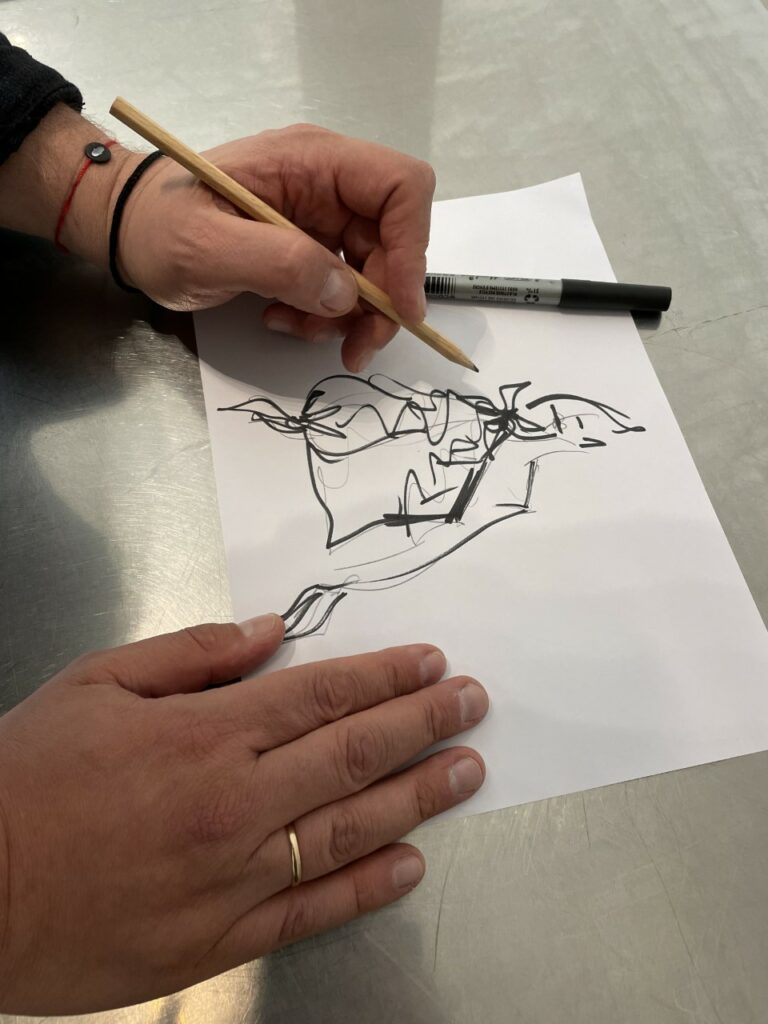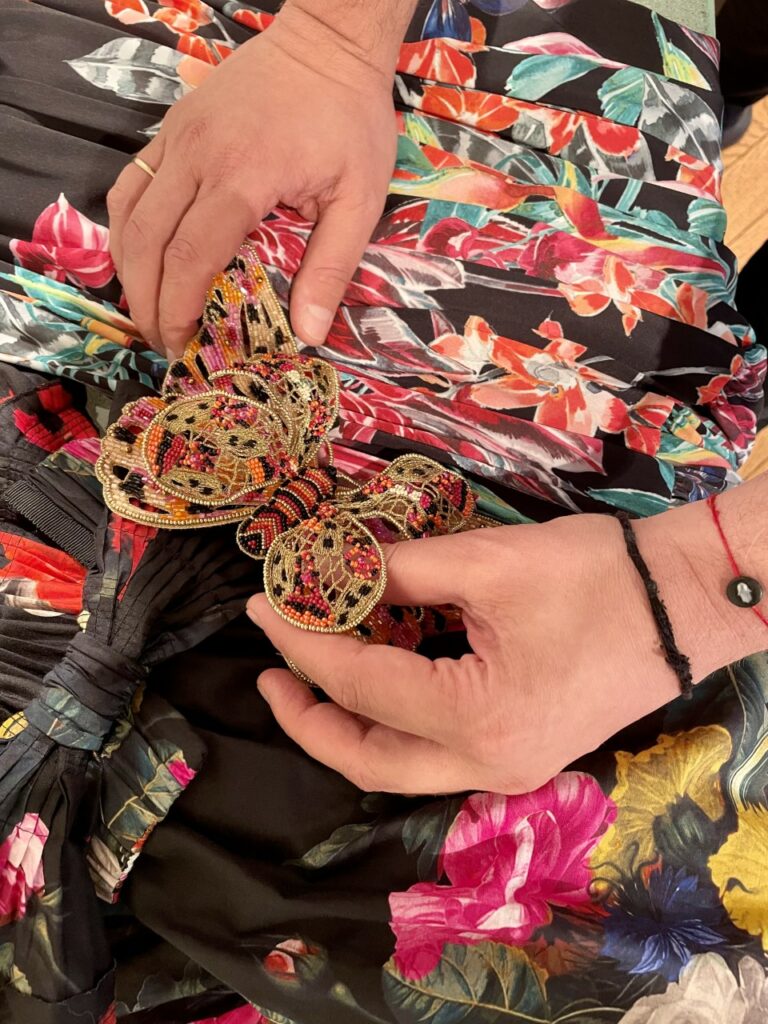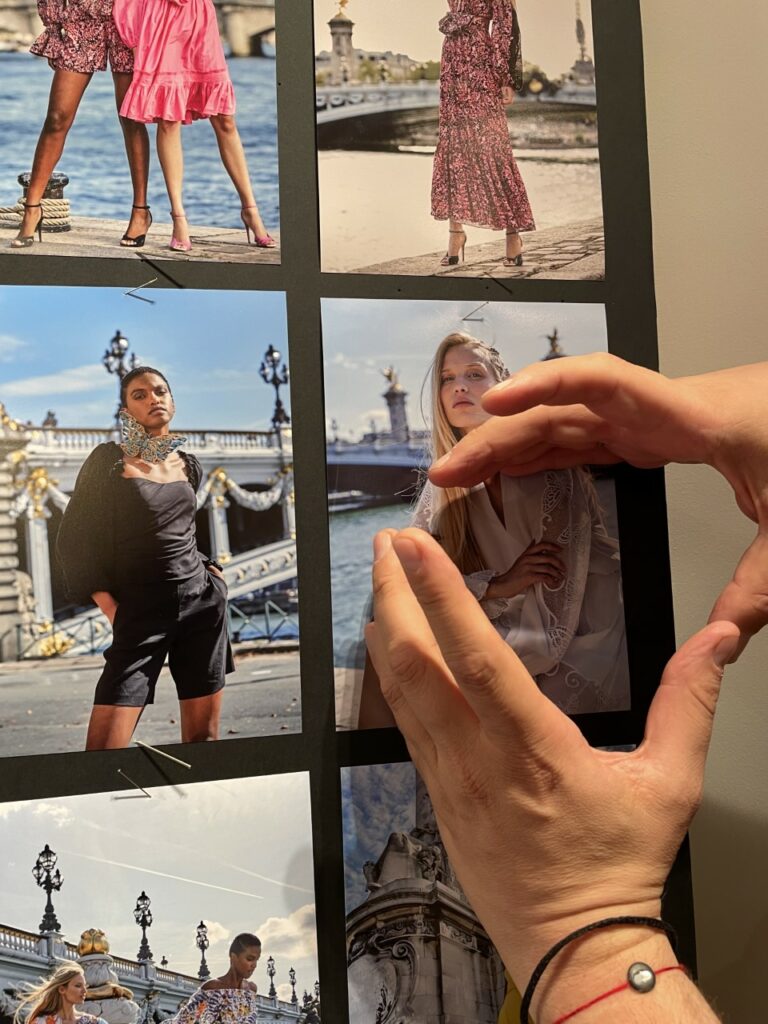Hands up: Kobi Halperin (Ungaro)

The large living room of the Ungaro house looks like a scattered bouquet of flowers: sweet peas, sunflowers, printed roses, you could be at Parisian florists Moulié or Lachaume. Kobi Halperin’s hands are circling in the air; everything he conjures up seems to be turning into a thicket of newfound images. From his past: where he was raised by a religious family in Tel Aviv, he drew his first figures on the pages of the Bible. “In Europe, in the United States, fashion school students can choose between one fabric and another. We had nothing, we had to invent everything”. Since June 2021, Halperin has been Ungaro’s new artistic director. Having attended Shenkar College in Israel, he now lives in New York, where he initially worked for 13 years as artistic director of Elie Tahari, then at Kenneth Cole. He will talk about his hands or those of his grandmother – who is eighty years old and wears white gloves – or those of his aunt with her nails finely lacquered red. He grew up in a world where each meal had to be preceded by a rite of ablution, of purification of the hands. In these moments, he assures us that every part of his history – home, education, memory – connects him to this history of gestures, of know-how, precisely because, “in an increasingly digital world, the hands are the last guardians of feeling, of our attachment to everything. what we like”. His family comes from Hungary, and he has always kept a very European link with objects. On his right wrist, a string bracelet with the Hand of Hamsa to bring good luck. It all starts with drawing, in pencil, then with a black marker, to “fix the silhouette.” Yes, the line is first of all movement. “A beautiful garment moves on the body” he says. Evidenced by these crepe sheaths strewn with polka dots, these lightly smocked linen backs; Instead of a still image, he prefers a tracking shot, camera pen in hand. Everything flies, everything moves, an invisible hand lightens the night dress of haute couture, transforming it to feminine afternoon attire where embroidered butterflies land in a breath. The sleeves are particularly developed: openwork, frills, the cuffs open in woven corollas. “The hand gathers, forges links. The hands tell us,” he says. “True beauty is imperfect, and only the hands can tell us this.” @laurence-benaim





